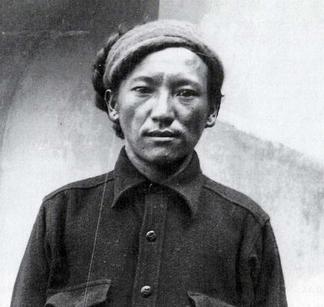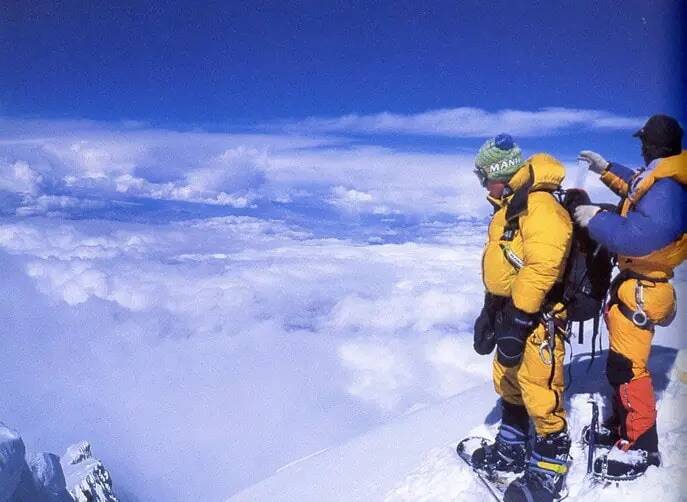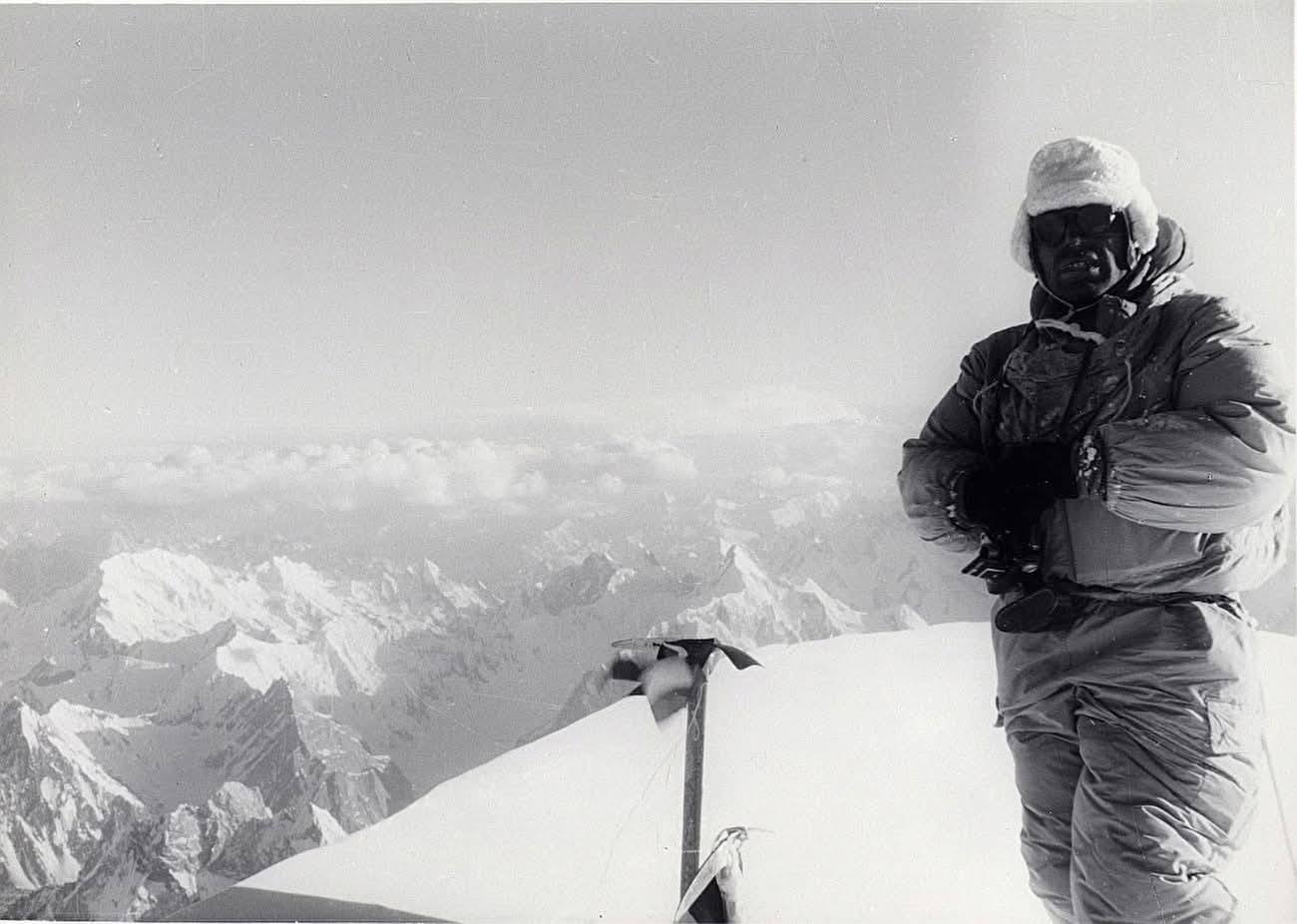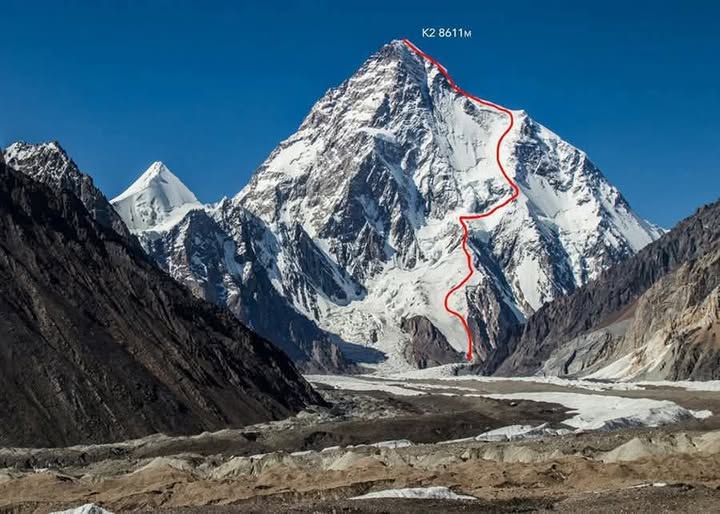Waking up on a frosty morning at first light on Ang Tharkay’s farm, south of Kathmandu, in 1975, is a memory that remains vivid in my mind. With a broad smile, he poured me tea, made in the Sherpa manner with tea, sugar, and milk boiled together. We had a breakfast of chapati and eggs from his farm. He had risen before daybreak and had milked cows and goats. Ang Tharkay was about 69 and I twenty seven.
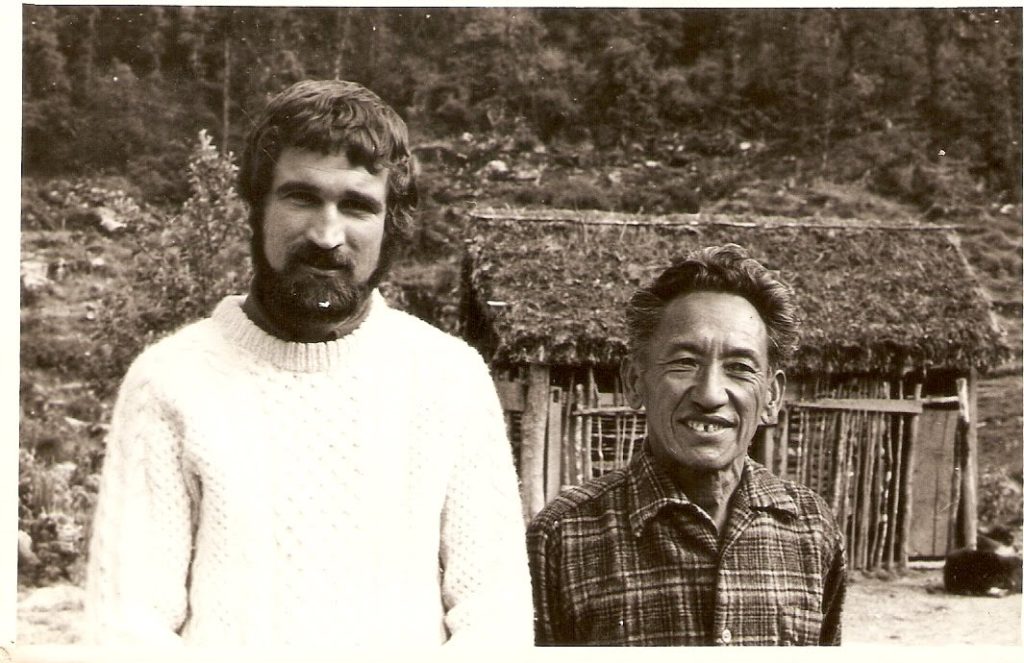
We talked of the great climbers he went on expeditions with: Eric Shipton, Sir Edmund Hillary, Maurice Herzog, Gaston Rebuffat, Lionmel Lachnel, Lionel Terray, Cmdr. Kohli and others. You could see he had a soft spot for Shipton and the French expeditions he had been on.
Born and raised in Khumbu, later migrating to Darjeeling, Ang Tharkay’s first expedition was to Kangchenjunga in 1931. He was on Everest in 1933, 1935, and 1938, when he was cook and sirdar, having been formally made sirdar for the first time on Nanda Devi in 1934. He was exceptional as both climber and sirdar, and his character won high praise from all who knew him.
Ang Tharkay, who died in Kathmandu on July 28th 1981, belonged to the first generation of elite climbing Sherpas. Born in 1908 in Khunde in the Year of the Monkey (according to the Tibetan calendar) Ang Tharkay went to Darjeeling at the age of twelve in search of work with expeditions.
When Nepal was opened to expeditions, and the first reconnaissance groups traveled up the Dudh Kosi to Solu Khumbu, Ang Tharkay was with them. He had shed his traditional Sherpa pigtail, and dressed in smart woolen breeches, “but had same, shy reticence and quite humour”, that Shipton remembered. He joined Eric Shipton, and Edmund Hillary on their 1951 expedition in which they tackled the treacherous Khumbu ice fall, the gateway to the southern route to Everest, and paved the way for the first successful ascent two years later. The expedition then went on to explore the upper reaches of the Imja Valley, the Hongu Basin, and then crossed the Tesi Tapcha into Rolwaling. Shipton was impressed by Ang Tharkay, and was moved to remark that he regarded his chief Sherpa as “a man of outstanding character and ability”.
Ang Tharkay also took part in another epoch making Himalaya climb, the French Expedition to Annapurna in 1950, lead by Maurice Herzog. He reached the top camp above the “Sickle” on the north face of the first eight-thousander to be climbed.
After this, he was sent for training in technical climbing in Switzerland by the Himalayan Mountaineering Institute in Darjeeling. Although he was invited by Herzog to bring his wife along to France, it is indication of Ang Tharkey’s forthrightness that he refused to take his wife to save his “Bara Sahib” extra expenses.
In 1954, Ang Tharkay resigned from the HMI and set up his own business taking trekkers up to Kangchenjunga. In 1962, he became the oldest man to have climbed up to eight thousand meters, when he made it to the South Col with the Indian Everest Expedition. Although he then retired from active mountaineering,
The year I first met him. 1975, Ang Tharkay took a party up to the Annapurna Sanctuary , and sirdared the French Expedition to Dhaulagiri in 1978, at the age of 70.
I remember how active he was virtually running round his farm to do his daily work, always with a smile on his face.As a young mountaineer sitting at the foot of a Guru in every sense of the word, I learnt so much from him. Simplicity, mental toughness, simple diet, hard work, humour, family, friendship, and above all, humility. Here was the man he had introduced the famous Tenzing Norgay to mountainering expeditions: clearly the Father of the modern Sherpa mountain guide as we know him today.
At seventy three years young, Ang was still extremely fit, and many remember the cheerful waves he gave from his bicycle on Durbar Marg. (He never rode in cars if he could help it). Ang Tharkay was looking forward to a quiet retirement in his orchard and farm in Simbhanjayang, when he was suddenly hospitalized and died of cancer.
In Eric Shipton’s classice, A Blank On the Map Shipton describes his exploration of the Karakoram’s Shaksgam and N side area of K2 in 1937. This was a very small expedition that consisted only of Shipton, H. W. Tilman, M. A. Spender, J. B. Auden, seven Sherpas (under Sirdar Ang Tharkay), and four Balti porters. This five-month expedition mapped 1,800 square miles of rugged, glaciated, uninhabited country containing many of the world’s most spectacular mountains.
In 1954 autobiography of Ang Thrace, Mémoires d’un Sherpa , it says that Ang Tharkay was Tenzing’s landlord in Darjeeling and also his mentor. Ang Tharkay accompanied Shipton on eight expeditions and was also a sirdar [leader] on the 1950 French expedition to Annapurna, led
He went to Annapurna with the French in 1950, to Everest in 1951, to Cho Oyu in 1952, to both Dhaulagiri and Nun in 1953, to Makalu in 1954, and finally to Everest with the Indians in 1962.
In 1955:he joined an an Indian expedition from the Himalayan Mountaineering Institute in Darjeeling makes the second ascent of Kamet on July 6. Major Narendra D. Jayal led the party; Jayal, Ang Tharkay, Da Namgyal, Ang Temba, and Hlakpa Dorje comprised the summit team. Their route followed the ridge linking Abi Gamin and Kamet.
I was first drawn to Ang Tharkay in my early teens when I saw a photo of diminutive Ang Tharkay, carrying a large, frost bitten French climber, Gaston Rebuffat, on his back down the mountainside from a high camp on Mt. Annapurna.
Having been born in the barren Solo Khumbu, the lush green grass and trees of his farm in Simbhanjayang, south of Kathmandu, was an oasis. He was close enough to meet old climbing friends from abroad, fellow Sherpa’s from earlier climbs, yet beuing able to go to his farm when he wanted peace, quiet and self sufficviency.
The first time I visited Ang Tharkay was with his son Pemba who I had met in Kathmandu.
Later that year before I returned to Switzerland, Ang Tharkay was very distraught. The wife and daughter of his old climbing partner Ed Hillary, had died in a terrible plane crash in Kathmandu. He had made a special and swift visit into Kathmandu to comfort Sir Ed, Peter and Sarah. I remember that tragicday well as I was in Kathmandu and heard the plane crash and got the news an hour later. I joined a group of friends to give what support we could to a grieving Hillary family.
As a young man I had the privilige of meeting the two greatest early-era Sherpas, Ang Tharkay and Tenzing Norgay. I met Tenzing in 1972 in The Mall in Darjeeling and we sat on a wall talking about his climbing career. Tenzing seemed a much more complex man than Ang Tharkay. At the risk of sounding disrespectful, I felt Tenzing had problems handling fame and status, whereas Ang Tharkay seemed totally unaffected by it, and found simple things like farming, cycling and being with family, more than satisfied his small needs. In my youthful mind, Ang Tharkay was the Father of the modern day climbing Sherpa.
This post is a courtesy of Bob McKerrow (2010).


